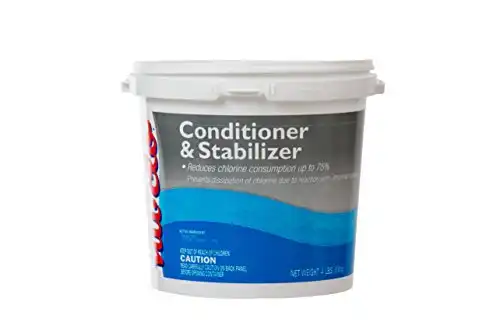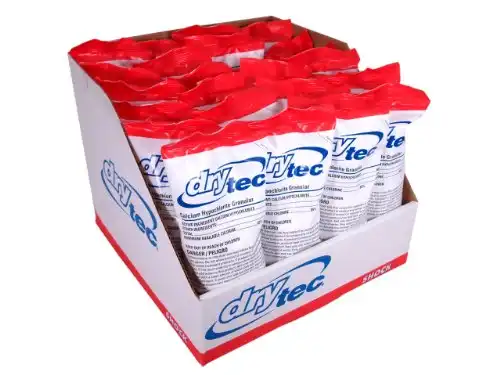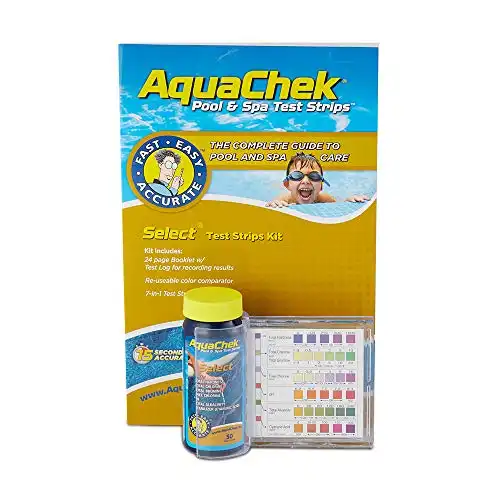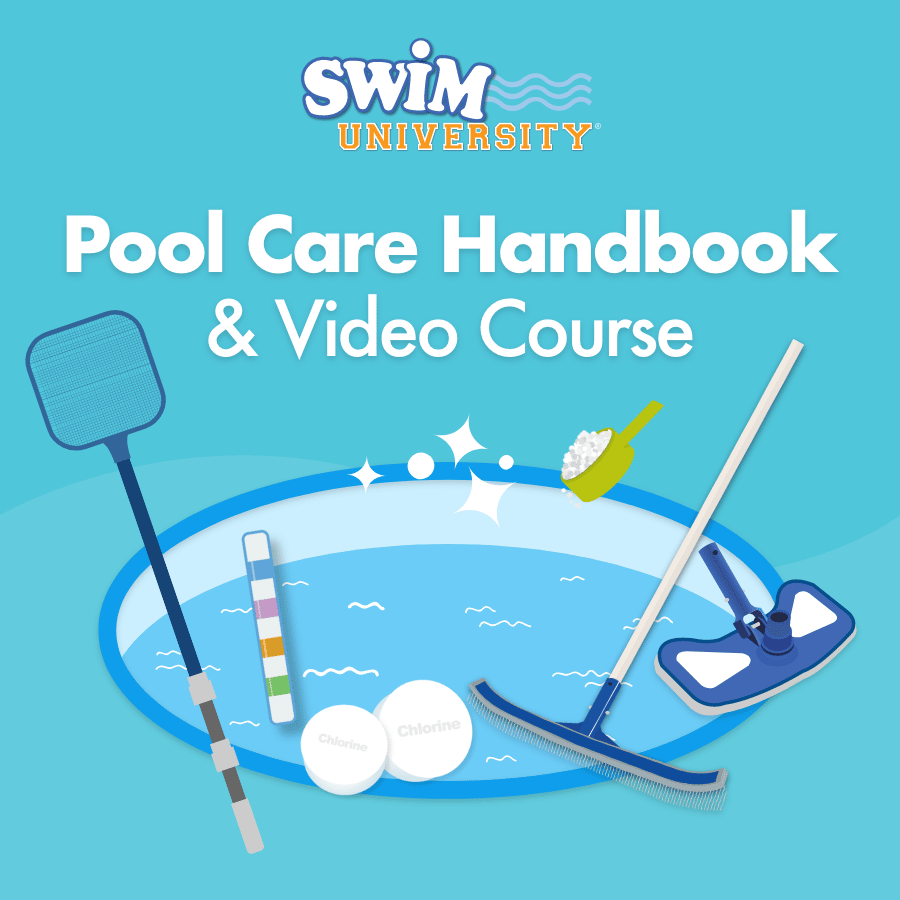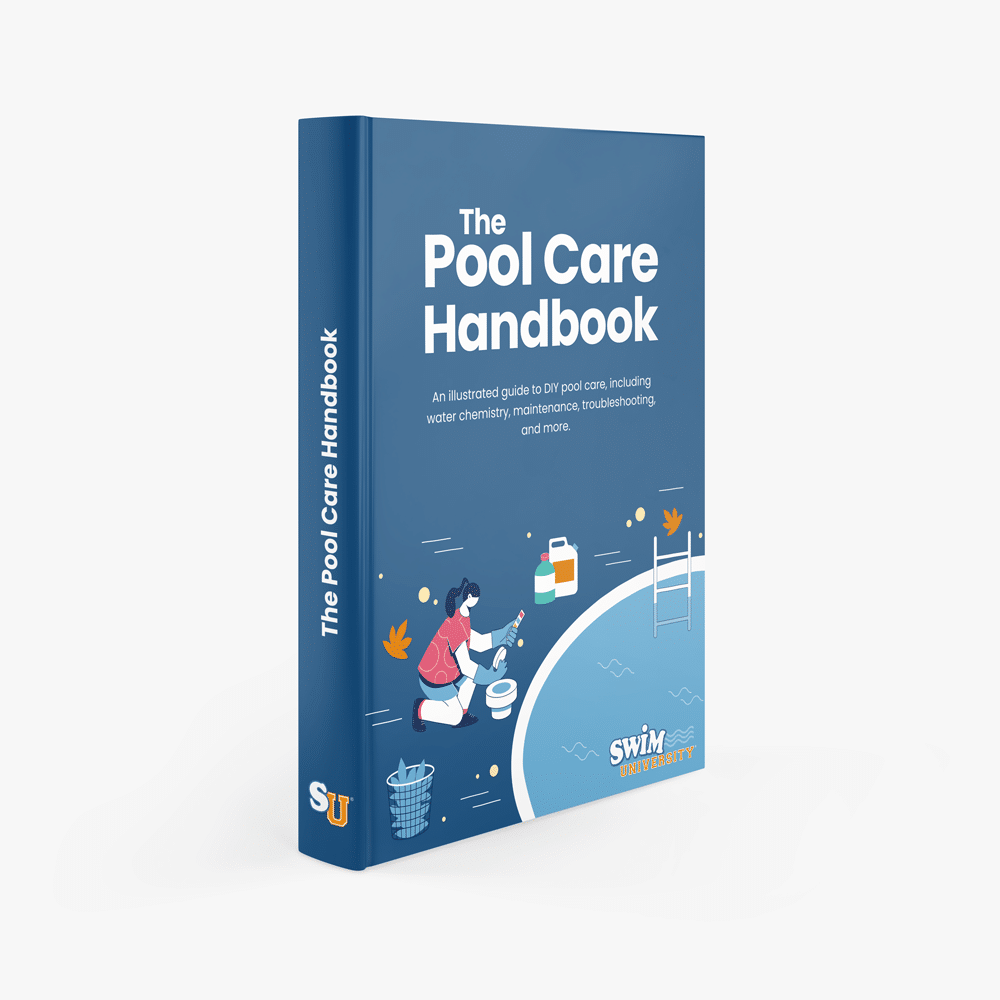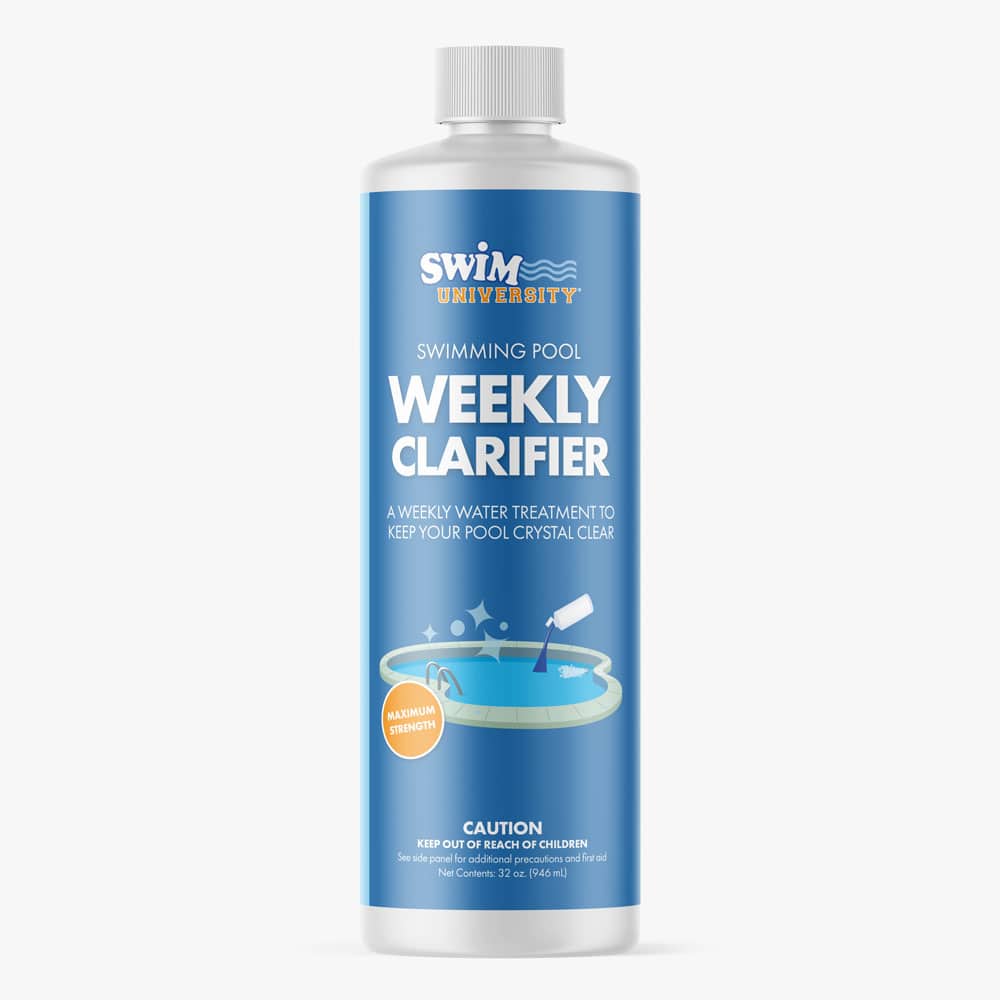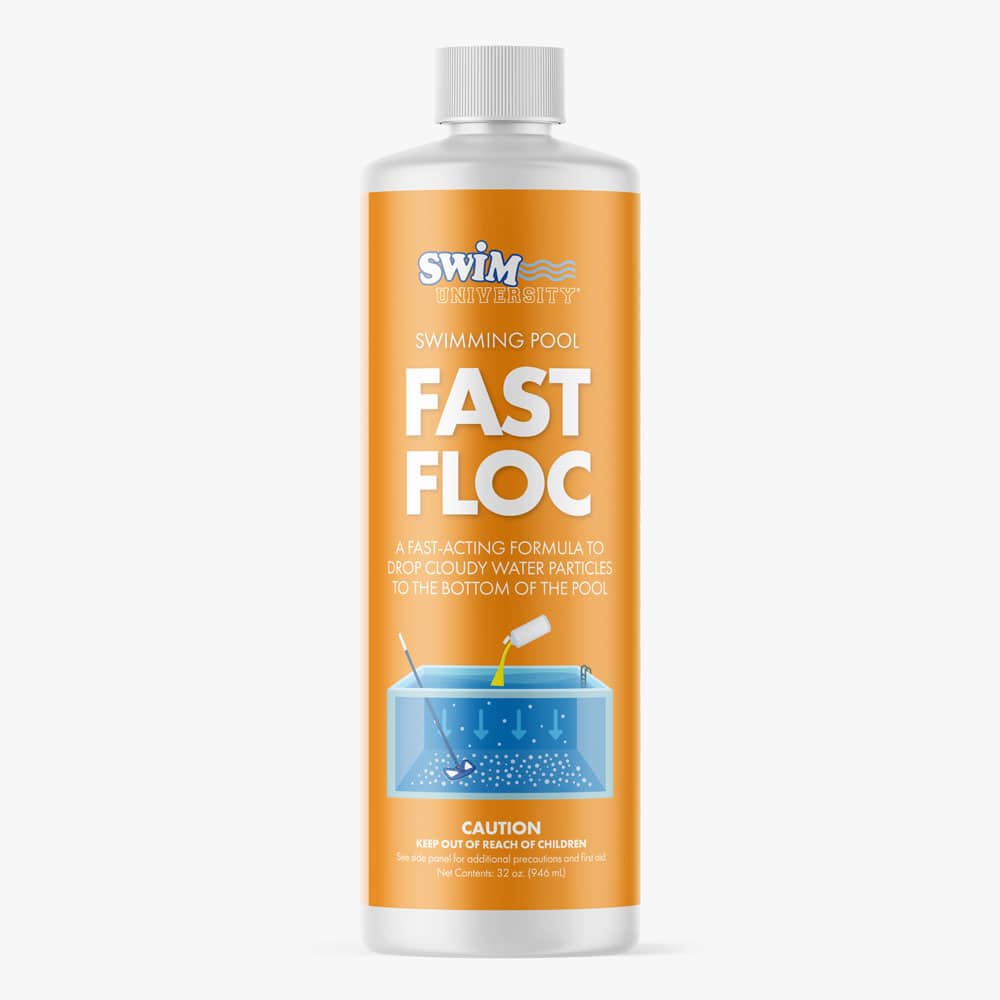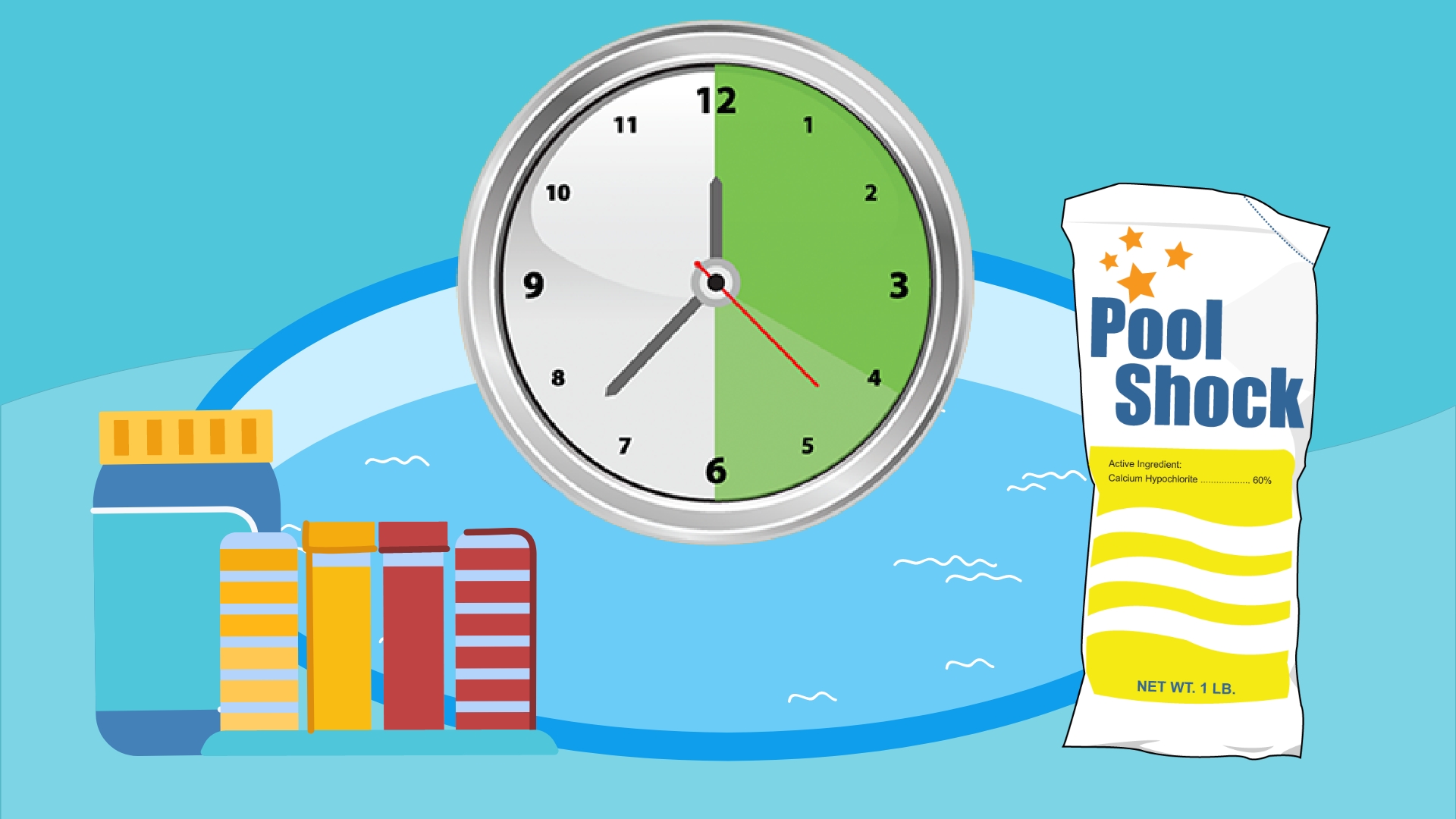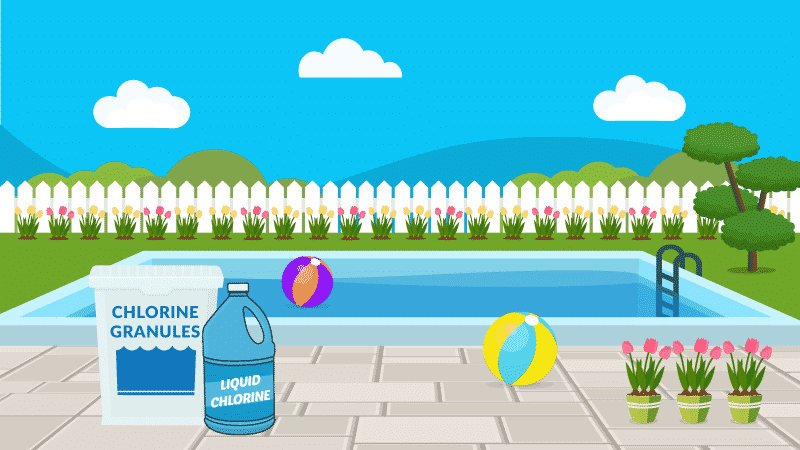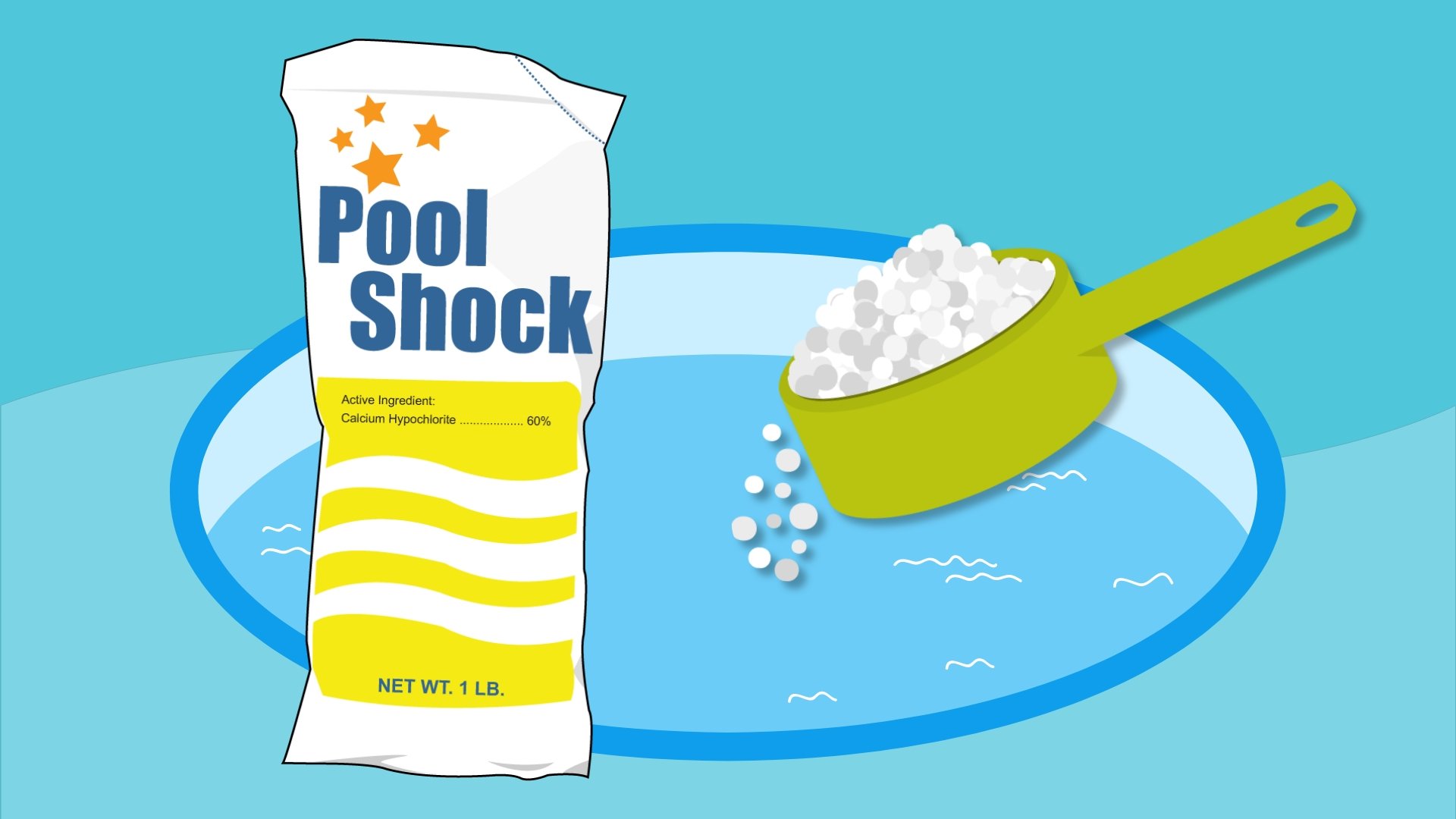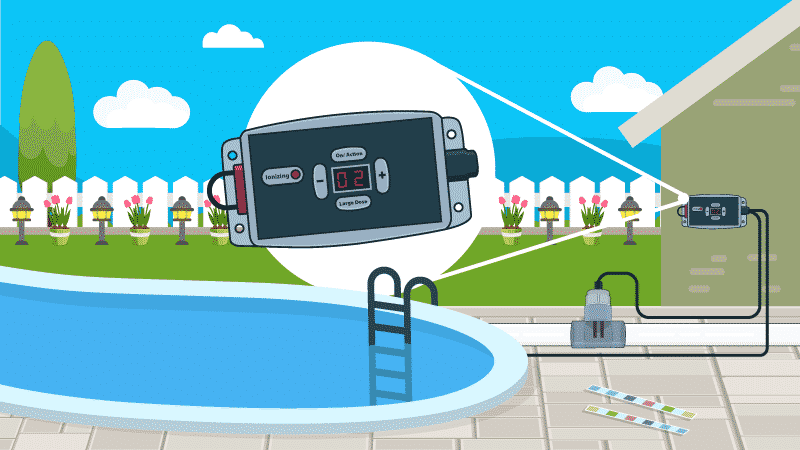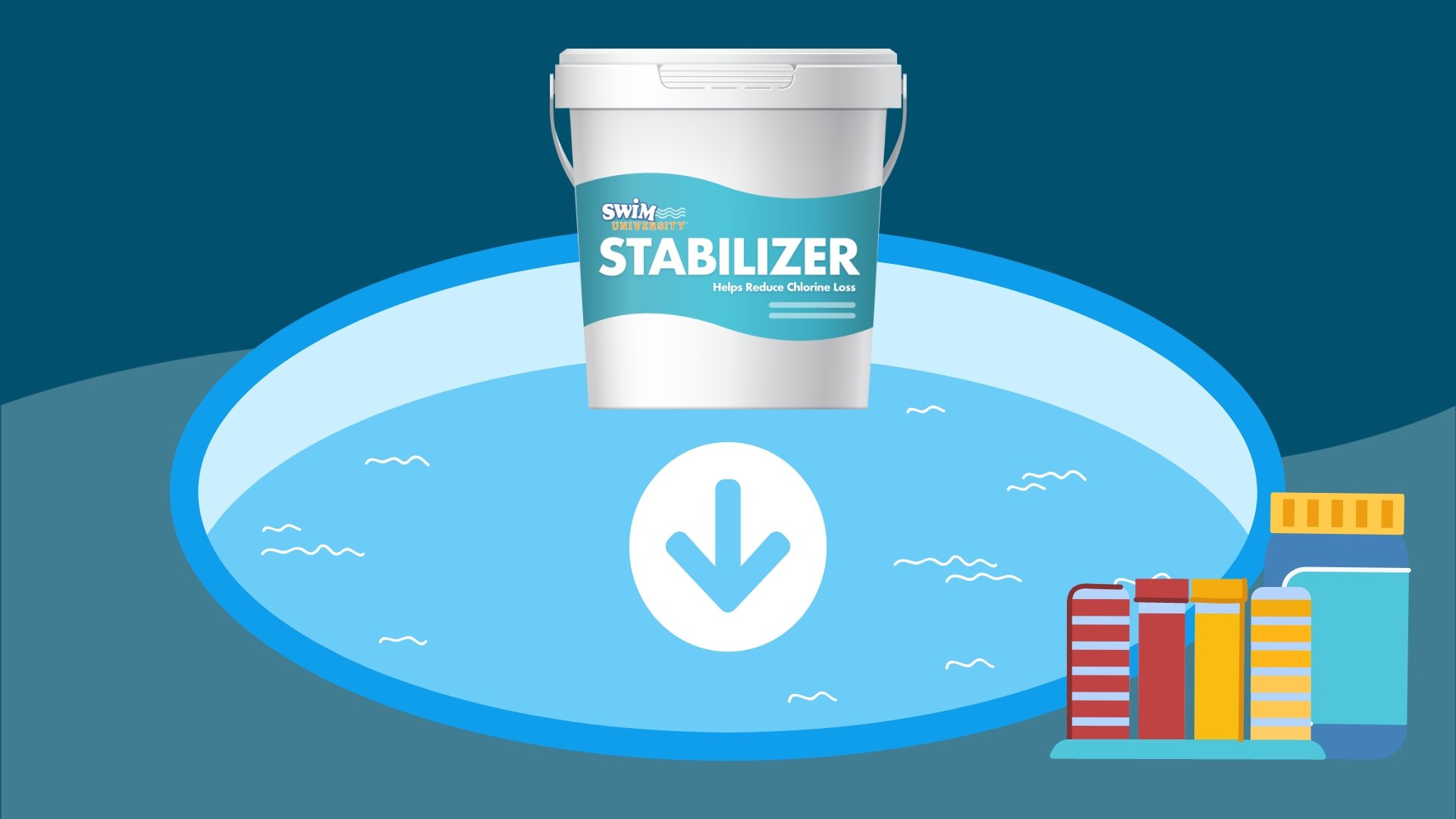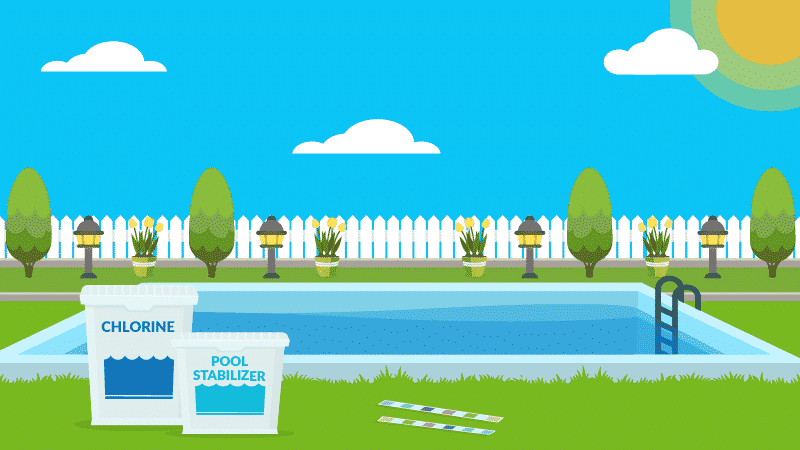Lock and Demand. They’re actually a couple of problems you might run into with your pool water. Actually, they’re just one problem, because chlorine lock is misleading.
Before we dive in, you know that chlorine is the number one thing you need to keep your pool water clean and safe. If you don’t have enough chlorine in the pool, then it’s not going to be a fun time for anyone. If you want to make sure that your chemistry is perfect all season long, then we recommend getting our video course which teaches everything about how to take care of your pool so that it will always be safe for swimming.
Cut the confusion with our easy-to-use video course. Save $1,000's on pool care and keep your water clean and clear for good!
Learn MoreWhat is Chlorine Lock?
There’s a theory flying around out there that chlorine can be inhibited from doing its job by cyanuric acid. The theory goes that, when this happens, the chlorine won’t be able to function as a sanitizer because it’s “locked up.”
This is not a real thing. There’s a reason cyanuric acid is also known as chlorine stabilizer. It’s because it actually helps chlorine to do its job by preventing it from breaking down as quickly in sunlight as it would if it weren’t stabilized.
Can you have too much stabilizer in the pool? Of course. You can have too much of any chemical in your pool. Just follow the manufacturer’s instructions when you use it, perform regular pool water testing to see what’s going on and keep the water balanced.
Keep your chlorine from being burned off too quickly by the sun's UV rays. CYA will help you keep a better chlorine reading in your pool.
What is Chlorine Demand?
OK, this is a real thing. Chlorine’s effectiveness is finite. If there’s a high bather load, or there’s just a lot of debris and other organic contaminants in the pool, more chlorine is required to properly sanitize the water.
In other words, fighting those materials in the water demands more chlorine. So this situation is known as chlorine demand. It’s rare, but not unheard of.
What Causes Chlorine Demand?
Aside from bather load and debris, you may also run into this issue in the spring when you open your pool.
During the winter, as the water sat stagnant and untreated, it may have accumulated quite a bit of organic contaminants that will take a lot of chlorine to neutralize. This could also happen if the pool is open, but hasn’t been cared for properly or in a long time.
Heavy rainfall can also be a factor depending on the chemical makeup of the rainwater. There’s no way to test this for sure, but if you have trouble maintaining a chlorine reading after a rainstorm, chances are you have chlorine demand.
Runoff can introduce contaminants into the water that will essentially use up all the chlorine. Be sure to keep fertilizers or other non-pool chemicals away from the pool.
How to Diagnose Chlorine Demand
If you’ve just added chlorine to the pool, or you’ve used chlorine shock, and you test the water, and it still shows a low level of chlorine, you’ve got a demand problem on your hands.
How to Cure Chlorine Demand
The good news is, this is a fairly easy problem to fix. All you need to do is super chlorinate the water. The fastest way to do this is by shocking your pool. But not the way you normally do. Your best bet is to triple shock it with calcium hypochlorite.
To triple shock, add 3 pounds of shock per 10,000 gallons of water. You’ll need to know your pool’s volume to do this correctly, which you can determine with a pool calculator.
 Rectangle
Rectangle
 Round
Round
Before adding the shock, make sure the chlorine stabilizer level is somewhere in the range of 30 ppm to 80 ppm, with 50 ppm being ideal. Also, remember to shock at night because sunlight reduces chlorine’s effectiveness—which is the very reason you’re using stabilizer.
This fast-acting, quick-dissolving swimming pool shock kills bacteria, controls algae, and destroys organic contaminants in pools.
Are Chlorine Lock and Chlorine Demand the Same Thing?
These terms are sometimes used interchangeably, but they’re not the same issue.
Chlorine demand is real and solvable by adding enough chlorine to your pool until it starts to register on your liquid test kit or test strips.
Chlorine lock is a false issue, a term that some pool companies and experts will use when they really mean chlorine lock (should say chlorine demand). So if a pool pro tells you your pool is suffering from chlorine lock, you’ll know the fix is still to add more chlorine to the pool.
Tests for 7 important chemistries in seconds: Total Hardness, Total Chlorine, Total Bromine, Free Chlorine, pH, Total Alkalinity, and Cyanuric Acid.
That show wouldn’t last long anyway. And neither will chlorine demand if you take swift action to correct it. And as for chlorine lock, don’t let that old wives’ tale divert you from addressing problems that may actually develop, or from enjoying your well-cared-for pool.
Happy Swimming!
Need More Pool Maintenance Help?
- Download our free Pool Care Cheat Sheet. It’s a free, easy-to-use guide to help you keep track of taking care of your pool.
- Subscribe to our Swim University YouTube Channel. We publish free video tutorials throughout the pool season.
- Check out our Pool Care Course. You’ll get 30+ step-by-step videos and a downloadable guide with everything you need to know about pool maintenance.


